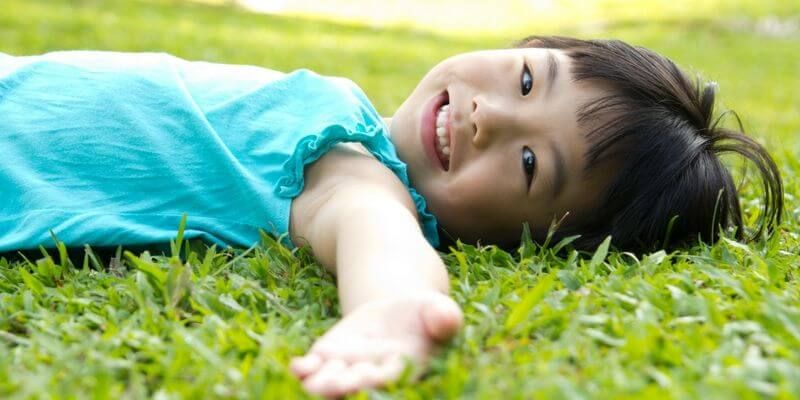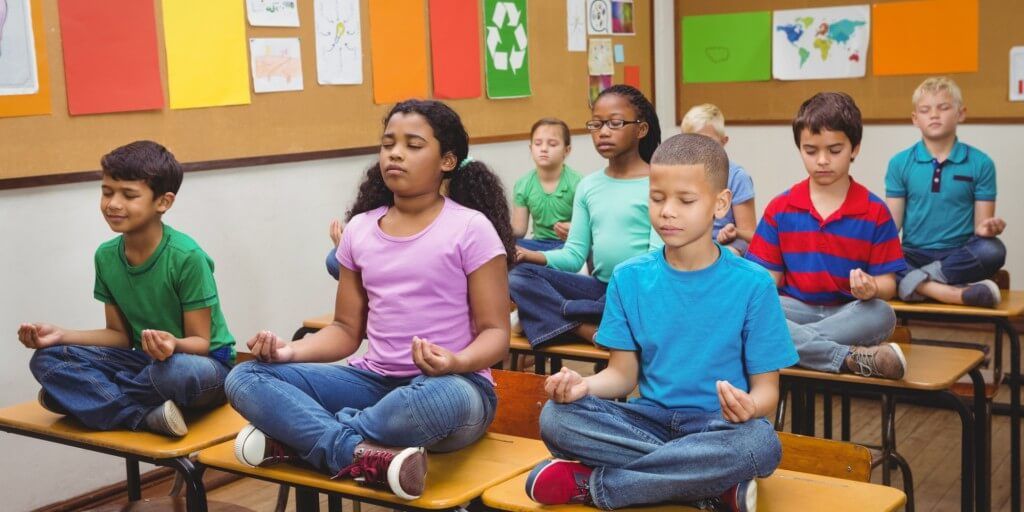
15 Tips for Teaching Mindfulness to Kids and Teenagers
When you are trying to teach your kids or young clients about mindfulness and its benefit, we recommend you begin with a few guidelines:
- Make sure they are ready to give mindfulness a try; if they are full of energy and itching to run and play, it may not be the best time for practicing mindfulness for the first time.
- Explain what mindfulness is and what it is not; give examples of what seems similar to mindfulness but is not (i.e., introspection or chasing thoughts down the “rabbit hole” versus listening to our bodies).
- Say it in an age-appropriate way, with words they will understand.
- Offer to practice mindfulness with them; sometimes having a model makes all the difference.
- Assure them that it’s okay to get off track, and how to gently guide themselves back to mindfulness when they realize they lost focus.
- Finish the practice by doing something they enjoy with them to ensure they have a positive experience.
Megan Cowan, co-founder, and co-director at the Mindful Schools program in Oakland, also has some tips on how to teach mindfulness to kids (2010):
- Keep the purpose of mindfulness practice in mind. Be sure to engage in mindful practice with children in positive situations, and never use it as a disciplinary tool.
- Make sure you practice mindfulness yourself!
- Set a daily routine for practicing mindfulness to make sure you incorporate it.
- Prepare the environment for successful practice; move the furniture around or have everyone switch positions.
- Involve students in the process; perhaps designate a different child each day to alert the class when it’s time to practice mindfulness or help set up any tools or props.
- Share your own experiences with the kids; this will help them understand how mindfulness is applied and practiced in everyday life. Feel free to share how you redirect yourself when you feel distracted during a mindfulness session.
- Encourage the children to share their experiences as well, whether they were good experiences with mindfulness or experiences in which they got distracted. Maybe each session can end with a few students sharing how it went for them.
- Practice every day. The more you embed mindfulness into the daily routine, the easier it is to engage.
Cowan (2010) also includes a short script if you’d like to use her mini-lesson.
Relay the following instructions to your kids:
- “Please get into your mindful bodies–still and quiet, sitting upright, eyes closed.”
- “Now place all your attention on the sound you are about to hear. Listen until the sound is completely gone.”
- Ring a “mindfulness bell,” or have a student ring the bell. Use a bell with a sustained sound or a rain stick to encourage mindful listening.
- “Please raise your hand when you can no longer hear the sound.”
- When most or all have raised their hands, you can say, “Now slowly, mindfully, move your hand to your stomach or chest, and just feel your breathing.”
- You can help students stay focused during the breathing with reminders like, “Just breathing in … just breathing out …”
- Ring the bell to end.
Mindfulness Games, and Apps to Support Your Teachings
Technology offers learning and development for these practices. To ensure that you are using technology to your advantage when it comes to teaching children mindfulness, give some of these resources a try.
Smiling Minds App
Another application that is popular for children as young as seven is the Smiling Mind app. This app is available through the Apple App Store as well as the Google Play store. It is free to download and use.
This app offers similar features to the Mindfulness for Children app, including a body scan activity. There are dozens of modules with hundreds of sessions available, each customized for wellbeing, education, and the workplace (for adults).
If you’d like to check out the reviews for this app or learn more about it, visit the website.
Still Quiet Place
If you’d like to use a video to help your kids learn how to practice mindfulness, the “Mindfulness Exercises for Kids: Still Quiet Place Video” is a great resource. This animated video can help students learn how to go to a “still quiet place.”
Mindfulness Games for Kids
Several interactive games are available on the Kids Activities Blog. Here are just a few:
- Blowing bubbles. Have your kids focus on taking in a deep, slow breath, and exhaling steadily to fill the bubble. Encourage them to pay close attention to the bubbles as they form, detach, and pop or float away.
- Pinwheels. Use the same tactics from blowing bubbles to encourage mindful attention on the pinwheels.
- Playing with balloons. Tell your kids that the aim of this game is to keep the balloon off the ground, but have them move slowly and gently. You can tell them to pretend the balloon is very fragile if that helps.
- Texture bag. Place several small, interestingly shaped or textured objects in a bag. Have each child reach in and touch an object, one at a time, and describe what they are touching. Make sure they don’t take the object out of the bag, forcing them to use only their sense of touch to explore the object.
- Blindfolded taste tests. Use a blindfold for each child and have them experience eating a small food, like a raisin or a cranberry as if it was their first time eating it.
If you want to know about more games you can play with children to teach them about mindfulness, check out the book Mindful Games: Sharing Mindfulness and Meditation with Children, Teens, and Families by Susan Kaiser Greenland.
The Basics: Teaching Essential Mindfulness Practices and Skills
Before you delve into the classroom, review these basic skills and you may have better success with students and clients learning mindfulness.
Mindful Breathing
Mindful breathing is a staple of practicing mindfulness. It is the foundation of many other exercises. To help kids learn how to engage in mindful breathing, you can use a video like the one below:
They also get an opportunity to visualize their breath with a color and focus on the experience of their breath moving through their nostrils. Lastly, the video ends with the exercise of the children imagining (with their eyes closed) that they used to be a fish and paying attention to how it would feel to breathe through their lungs for the first time.
Body Scan
 The body scan is a key practice in mindfulness, and an easy one to teach to children.
The body scan is a key practice in mindfulness, and an easy one to teach to children.
- Have your kids lie down on their back on a comfortable surface and close their eyes;
- Then tell them to squeeze every muscle in their body as tight as they can.
- Tell them to squish their toes and feet, squeeze their hands into fists, and make their legs and arms as hard as stone;
- After a few seconds, have them release all their muscles and relax for a few minutes;
- Encourage them to think about how their body is feeling throughout the activity (Roman, 2015).
This simple exercise gets kids to be more aware of their bodies and helps them find a way to be present in the moment.
Heartbeat Exercise
Paying attention to one’s heartbeat has a role in many mindfulness exercises and activities. To begin, tell your kids to jump up and down in place or do jumping jacks for one minute.
When they have finished, have them sit down and put a hand over their heart. Instruct them to close their eyes and pay attention only to their heartbeat and, perhaps, their breath as well (Roman, 2015).
This exercise teaches children to notice their heartbeat, and use it as a tool to help their focus. These skills will come in handy as they start engaging in more advanced mindfulness activities.
Mindfulness Meditation for Very Young Children
You might be thinking that these tips and exercises are great for elementary or middle school students, but less realistic for young children. This section focuses on children who are toddlers through kindergarten graduates.
One mother explained laid out her five strategies for teaching young children mindfulness—starting with her three-year-old child learning mindfulness.
Her strategies are:
- Teach kids to recognize and identify their own emotions. Children need to associate the word or term for an emotion with the actual experience of feeling that emotion. Encourage them to think about how each emotion feels in their body. Does anger feel like they’ve got steam coming out of their ears? Does love make them feel like their heart is going to burst open?
- Validate their emotions. Children often respond with frustration or sadness when told that their pain, however trivial it seems to us, is “not a big deal.” When teaching mindfulness, let kids feel their feelings without fear of judgment. Focus instead on teaching them tools to listen to their emotions.
- Teach kids mindful breathing strategies. As we noted above, mindful breathing is a building block in all mindfulness practices. Children benefit from focusing on their breathing when confronted with emotions that are hard to manage.
The author of the blog laid out three techniques she has put to use with her children:
1. Noticing the breath: this involves simply paying attention to what breathing actually feels like.
2. Five-finger starfish meditation: this breathing technique has kids holding up one hand in a starfish position (fingers spread wide) while they gently trace up and down each finger with the other hand, focusing on regular breathing at the same time.
3. Counting the breath: this technique is what it sounds like: have your children pause and count their breaths. One breath in is “1”, the next breath out is “2,” etc. You can have them count to 10 if they’re very young, or slightly higher depending on their abilities.
- Lead them in a guided meditation. Use a script or an exercise or app like the ones described above for this meditation.
- Practice what you preach. As we mentioned earlier, it is so important to actually “do as you say.” Kids are intuitive and human nature encourages mimicry, two advantages we can harness when trying to teach (Beach, “Baby Buddhas.”)
Guide your kids every step of the way, but make sure you are taking those steps yourself as well. It will make everyone’s practice richer.
The Benefits Of Mindfulness In Schools (K12)
Childhood and adolescence are important developmental stages that will construct the groundwork for mental health in the adult developmental stage.
In recent literature, mindfulness-based school programs have demonstrated a range of social, cognitive, and emotional benefits for elementary and middle-school students.
Cognitive Benefits
 Executive function is a set of mental skills that constitutes attention, switching focus, planning, organizing, and remembering details.
Executive function is a set of mental skills that constitutes attention, switching focus, planning, organizing, and remembering details.
Research in education suggests that mindfulness practice can lead to improvements in executive function in children.
For instance, in the study of Flook et al., (2010) conducted on 3rd graders, students who went through an 8-week mindfulness program showed improvements in behavioral regulation, metacognition, and focus compared to the control group who did not have the mindfulness program.
In another study, students who had a 24-week mindfulness training scored higher in attentional measures in their elementary school (Napoli et al., 2004). Additionally, a study on preschoolers emphasized that children who went through a mindfulness curriculum for 12 weeks earned higher marks on academic performance measures. They also showed greater improvements in areas that predict future success (Flook et al., 2015).
Social Benefits
A social skill is any skill that we use to interact and communicate with others.
Deficits and excesses in social behavior can affect learning, understanding, and classroom climate. Recent research on lower-income and ethnic minority elementary school children highlighted how a 5-week mindfulness curriculum can lead to better participation in activities, as well as nurture a classroom culture of mutual respect and care in 9th-grade students (Black et al., 2013).
Emotional Benefits
Emotional health, which is a positive sense of wellbeing, is an important component of child and adolescent development. Emotional problems such as anxiety, stress, and depression can affect self-esteem, performance, and social interactions.
Mindfulness practice may facilitate the ability to manage stress, and also lead to deeper wellbeing in students.
According to one study by Schonert-Reichl and his colleagues (2010), mindfulness practice leads to higher scores on self-report measures of optimism and positive emotions in elementary school students.
Moreover, in a study conducted by Wall (2005), self-reported findings showed preteens feeling calmer, with an enhanced experience of well-being—and improved sleep—after a 5-week modified mindfulness-based stress reduction program.
Videos on Mindfulness in Schools
These four videos can help students open their minds to the benefits of mindfulness. We recommend pairing any of these segments with a discussion.
Questions for after the selected clip can include, “Has anyone practiced mindfulness, and how has it gone for you?” or “What do you think is the reason most people do not practice mindfulness, and how can we start changing this?”
A Take-Home Message
Research confirms that mindfulness can improve mental health by aiding wellbeing, attention, self-regulation, and social competency. It just needs to be practiced—and encouraged.
Mindfulness-based programs in schools can have a life-long impact on the psychological, social, and cognitive well-being of children and teens. Even at home or with clients, how can you incorporate mindfulness into your teachings and own schedule?
Do you have kids or work with kids regularly? Try these tips and activities out, and let us know how they worked in the comments section below.
Good luck, and remember this old saying:
Tell me and I forget. Teach me and I remember. Involve me and I learn.









0 Comments
Share your feedback.